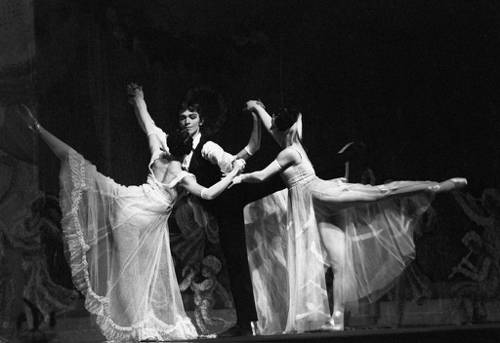
FAQ About The Role of Classical Ballet in Cultural Diplomacy

How does classical ballet function as a tool for cultural diplomacy?
Classical ballet serves as a tool for cultural diplomacy by showcasing cultural heritage and artistic excellence across international borders. As a universal language of dance, it allows countries to express cultural values and artistic traditions without language barriers. Such performances can foster mutual understanding and respect, thereby strengthening diplomatic relationships and promoting peaceful coexistence.

What are some historical examples of classical ballet being used in cultural diplomacy?
One notable example is the Ballets Russes, which toured internationally in the early 20th century, introducing Russian culture and art to a global audience. During the Cold War, the U.S. and Soviet Union exchanged ballet companies, such as the Bolshoi and New York City Ballet, as a form of soft diplomacy to ease tensions and promote cultural exchange.

Why is ballet an effective medium for cultural exchange?
Ballet is an effective medium for cultural exchange due to its non-verbal and emotive nature, allowing it to transcend linguistic and cultural barriers. The aesthetic appeal and technical precision involved in ballet performances can resonate widely with diverse audiences, making it an ideal platform for mutual appreciation and understanding of different cultures.

What role do international ballet tours play in diplomacy?
International ballet tours play a significant role in diplomacy by providing an opportunity for cultural exchange and dialogue between nations. These tours can help promote national culture, build bilateral relationships, and enhance mutual goodwill. Additionally, they allow for professional networking and collaboration among artists from different countries, fostering a more interconnected global arts community.

How has classical ballet influenced international relations?
Classical ballet has influenced international relations by acting as a soft power tool, which can ameliorate political tensions and encourage cooperation between countries. Ballet performances often highlight shared human experiences, contributing to cultural understanding and empathy. Such cultural exchanges can lead to improved diplomatic relations and enduring partnerships between nations.

What are some challenges faced by ballet companies in cultural diplomacy?
Ballet companies face challenges such as financial constraints, logistical complexities, and political considerations when engaging in international tours. Additionally, they must navigate cultural sensitivities and ensure that performances are respectful of the host culture. Securing permissions and visas, along with managing differences in artistic preferences, adds further complexity to diplomatic ballet tours.

Can ballet performances influence public perceptions of a country?
Yes, ballet performances can significantly influence public perceptions by showcasing a country’s cultural sophistication and artistic achievements. Successful ballet tours can enhance a nation’s cultural image, promoting a positive and appealing national identity. This cultural promotion can lead to increased interest in other aspects of the country, such as tourism, trade, and political alliances.

What are the benefits of cultural diplomacy through ballet?
Cultural diplomacy through ballet offers numerous benefits, including the promotion of cultural heritage, improved international relations, and global cultural exchanges. Ballet can help build bridges between societies, fostering mutual comprehension and cooperation. Additionally, it encourages artistic collaboration and innovation, contributing to the global cultural landscape.

How do governments support ballet for cultural diplomacy purposes?
Governments support ballet for cultural diplomacy by funding international tours, facilitating artist exchanges, and endorsing collaborations between ballet institutions. Many countries have cultural departments or offices dedicated to promoting their cultural heritage abroad, often through grants, sponsorships, and diplomatic channels to assist with the logistics and costs associated with international touring.

Are there specific ballet companies known for their diplomatic roles?
Yes, some ballet companies are renowned for their diplomatic roles, such as the Bolshoi Ballet and the Paris Opera Ballet. These companies frequently engage in international tours and exchanges, representing their countries in various festivals and events worldwide. Their performances contribute to the cultural diplomacy efforts of their respective nations.

How does ballet contribute to peacebuilding efforts?
Ballet contributes to peacebuilding by providing a neutral platform for cultural expression and dialogue, fostering mutual understanding and respect. Through joint performances, collaborations, and educational initiatives, ballet can help bridge cultural divides and promote peaceful interactions. Such efforts enhance empathy, reduce stereotypes, and facilitate positive engagement between diverse cultures.

What impact did the Cold War have on ballet's role in cultural diplomacy?
During the Cold War, ballet played a crucial role in cultural diplomacy, serving as a means to showcase ideological as well as artistic excellence. The U.S. and Soviet Union used ballet exchanges to demonstrate cultural supremacy, while also softening political hostilities. These exchanges helped humanize each side, facilitating cultural understanding amidst tense political climates.

How do cross-cultural collaborations in ballet evolve artistic expression?
Cross-cultural collaborations in ballet lead to the fusion of different artistic styles and traditions, resulting in innovative choreography and storytelling. These collaborations broaden artistic horizons, allowing dancers and choreographers to incorporate diverse techniques and narratives, enriching the art form. This blend of cultural elements fosters creativity and evolution within the ballet community.

Do audiences abroad respond differently to ballet performances compared to local audiences?
Audiences abroad may respond differently to ballet performances due to cultural and aesthetic differences. While local audiences might be more familiar with certain styles or themes, international audiences might experience them as novel and exotic. However, the core emotional and artistic expressions in ballet often resonate universally, leading to appreciation and admiration regardless of cultural background.

What role do international ballet competitions play in cultural diplomacy?
International ballet competitions play a significant role in cultural diplomacy by bringing together dancers from various countries, showcasing global talent and encouraging exchange among cultures. These competitions expand cultural awareness, foster friendships, and promote artistic excellence. They provide a platform for cultural interaction and can lead to professional opportunities and collaborations, strengthening cultural ties between nations.

How do technological advancements affect ballet's role in cultural diplomacy?
Technological advancements, such as live streaming and virtual reality, expand ballet's reach and influence in cultural diplomacy by making performances accessible to a global audience. These technologies enable wider participation in cultural events, create more opportunities for cross-cultural engagement, and preserve performances for future diplomatic and educational purposes. This increased accessibility can enhance global cultural understanding.

Can ballet classes and workshops be part of cultural diplomacy efforts?
Yes, ballet classes and workshops are often integrated into cultural diplomacy efforts, serving as educational exchanges that facilitate cultural and artistic learning. They provide opportunities for cross-cultural dialogue, skill-sharing, and the dissemination of ballet techniques and traditions. These educational programs help build lasting relationships and mutual respect between participants from different cultural backgrounds.

How do language barriers affect ballet's role in cultural diplomacy?
Language barriers are minimal in ballet's role in cultural diplomacy because ballet is a non-verbal art form. Its reliance on movement, expression, and storytelling through dance transcends linguistic differences. This allows ballet to effectively convey emotions and narratives, fostering cultural understanding and connection without the need for translation.

What challenges do dancers face when participating in cultural diplomacy initiatives?
Dancers participating in cultural diplomacy initiatives often face challenges such as adapting to different cultural environments, understanding diverse artistic styles, and overcoming logistical hurdles related to travel. They may also need to navigate cultural sensitivities to ensure respectful representation of both their own and the host culture. Despite these challenges, such experiences can be enriching and broaden their artistic perspectives.

How does funding influence ballet's effectiveness in cultural diplomacy?
Funding significantly influences ballet's effectiveness in cultural diplomacy by determining the scale, reach, and quality of international tours and cultural exchanges. Adequate funding allows for more frequent and elaborate productions, ensuring that ballet companies can reach diverse audiences and successfully represent their cultural heritage. Funding also supports logistical needs, such as travel, accommodation, and marketing, enhancing the overall impact of cultural diplomacy efforts.
